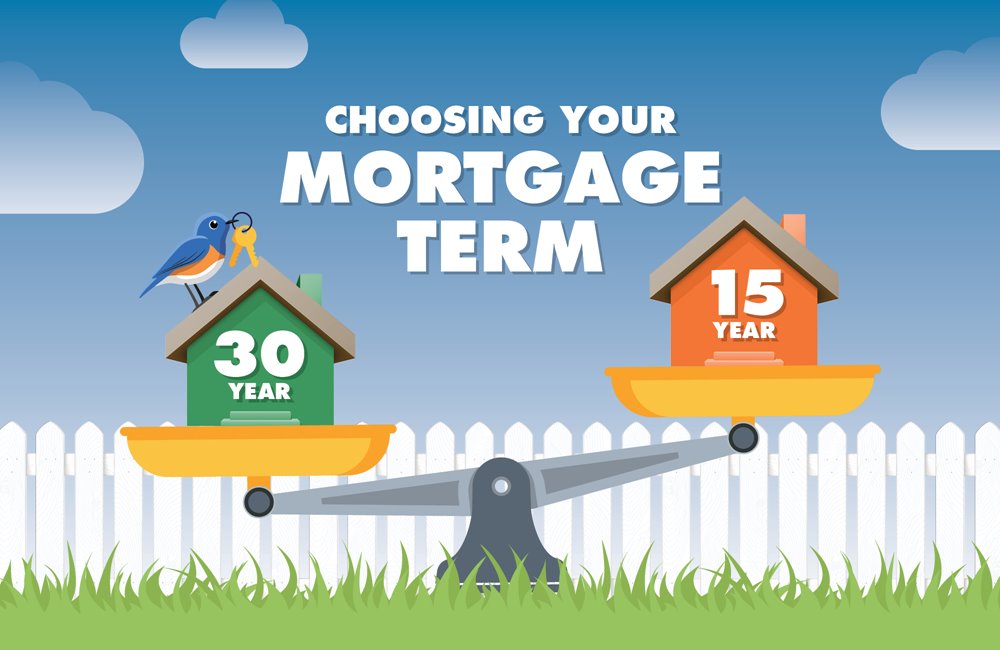
15 versus a 30 year mortgage
When it comes to purchasing a home, most American’s opt for a 30-year mortgage, citing it as the more “affordable” loan. While the 30-year loan term might be the right fit for many Americans, the 15-year mortgage is a great option to consider.
What’s the difference between the two?
Let’s start with the obvious. A 30-year mortgage is one that is paid back over the term of 30 years, while a 15-year mortgage is paid back over the term of 15-years.
With a 15-year mortgage, your monthly payments will be higher, but you’ll be paying less interest over the life of the loan, even if the interest rates were the same.
For example: On a $200,000 dollar loan with a 3% interest rate and a term of 30-years, you can expect to pay $843 in principal and interest each month, and $103,544 in interest over the life of the loan, making the total cost of the mortgage $303,544.
For the same loan amount of $200,000 and interest rate of 3% on a 15-year loan term, you can expect to pay $1,381 in monthly principal and interest ($540 more each month), but only $48,609 in interest over the life of the loan, making the total cost of the mortgage $248,609.
However, because a 15-year mortgage is deemed “less risky” by investors, borrowers are often able to qualify for a lower rate than they would on a 30-year mortgage.
You’ll also be building equity (the difference between what your home is worth and home much you have left on your loan) in your home faster, because you’re paying more toward your principal balance each month.
However, 30-year mortgages offer lower monthly payments, giving homeowners more flexibility and peace of mind that they can continue to make their monthly payments, even if their budgets or incomes fluctuate over time.
A lower monthly payment affords you the ability to put that money toward other important expenses, such as childcare, education, investment opportunities, home improvement projects, medical expenses, etc.
There are benefits to both 15- and 30-year mortgages. With a 15 year-mortgage, you’ll pay less in interest and gain equity in your home faster. With a 30-year mortgage, you’ll pay more in interest over the life of the loan, but you’ll have a more affordable monthly payment- and that’s hard to argue with.
When determining which term is best for you, it’s important to consider what your life might look like in 5-10 years from now. Do you expect to be making more money? Are you planning to have children or pay for college tuition? Looking at your monthly budget as well as your long-term goals can help provide more insight into which loan is right for you.
If you’re able to comfortably take on a 15-year mortgage, you are undoubtably saving a lot of money in the long run. But what if you’re not comfortable with locking yourself into that higher monthly payment?
There are a few options to help you lower the amount of interest paid over the life of your 30-year mortgage.
One option is to pay extra toward your principal balance. You can do this by paying extra toward your principal each month or making an extra payment or two each year. Paying just $100 extra toward your principal each month can help you save tens of thousands of dollars over the life of your loan and help you to pay it off earlier, without having to commit to a shorter term in case money gets tight.
Instead-or in addition to- making smaller payments toward your mortgage each month, you can make one large lump sum toward your principal when you’re able. Consider putting a bonus, tax return, or other windfall income toward your mortgage. Once again, just be sure to check with your lender or mortgage servicer that it will be applied toward your principal.
Still not sure whether a 30-year or 15-year mortgage is right for you? That’s what we’re here for. Your local mortgage loan officer will be able to run the numbers for you to determine what your monthly payment would look like with a 15 or 30-year mortgage.
